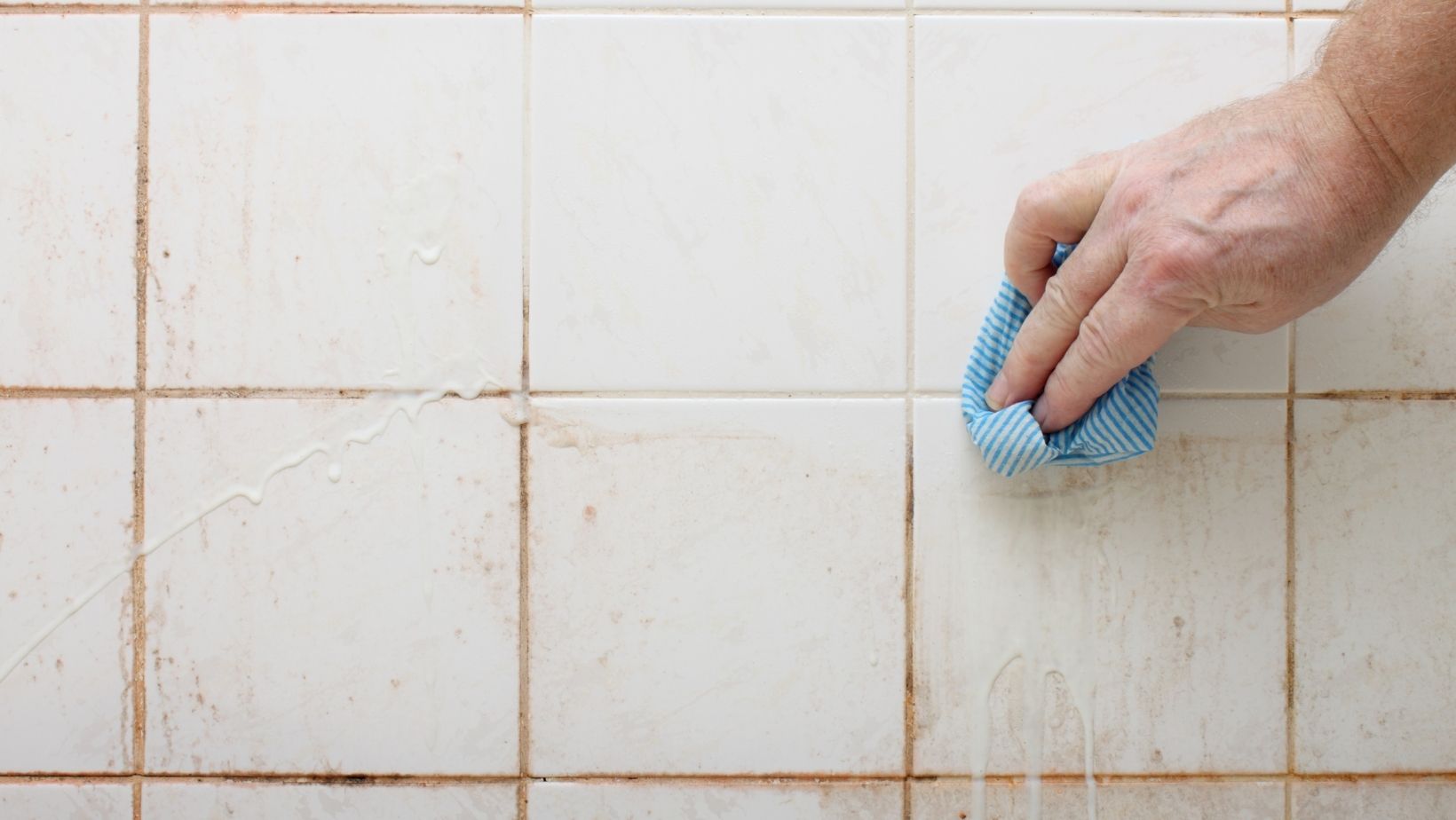
Top Dangers Of Bathroom Mould And Tips On How To Clean And Prevent It
By: 911 Water Damage Experts
Nasty, bathroom mould…Yuck. The thought of it makes us cringe.
If you ever see gross dark green substances around the shower, the sink, and behind the toilet it’s time to do something about it. Because, it’s not going to go away on its own.
Below we highlight:
– What is bathroom mould?
– The potential health hazards to bathroom mould
– Tips on how to clean bathroom mould
– Advice on how to prevent mould from forming in the future.
Let’s get right into it.
What is bathroom mould and how is it different than mildew?
Mould is usually a discoloration caused by different saprotrophic fungi that form in a damp environment on things like the surface of stored food, fabrics, wallpaper, etc. It helps nature decompose dead organic material. Both mould and mildew have different features and are two types of fungus. Mould is usually shades of black, blue, red, and green, whereas mildew is white.
Mould likes to grow in dark and damp places. This is why a bathroom, in particular, is the perfect place to find it. It creeps up and doesn’t show up overnight, but rather takes its time to grow, making it quite easy to spot from the very beginning.
There are different names for the mould, depending on which stage it is.
The first one, once it begins to develop, is called mildew.
This happens when the water that runs in the bathrooms is not wiped out or dried out. If you leave it like that, then it is bound to turn into mildew.
Once left like that for a longer period of time, the mildew develops and turns itself into mould.
Probably the worst fact about this is that water is the main reason why this is happening. As the water can easily get in between small and hidden places and between tiles, nooks and so on, so can the mould.
Mould prevention and removal is a tricky business…
Sometimes there are hidden places within the pipes under your sink. This is where water is formed due to small leaks that happen and it’s an excellent hiding spot for the mould to form.
What are the most dangerous types of moulds that form in the bathroom?
There are four main moulds that form:
Penicillium,
Cladosporium,
Aspergillus,
Stachybotrys (black mould).
All of the varieties of mould look greenish or yellowish, maybe with a hint of blue, except for black mould.
This one is the most dangerous one for your bathroom.
Despite having a distinct difference between these types of mould on paper, once you see them in your bathroom, you might have a difficult time telling them apart.
What you need to consider here is to treat all mould in the same manner. Make sure you get the right products and tools you need and strive towards removing the mould as soon as you possibly can.
Is it possible for bathroom mould to cause serious illness?
The majority of cases dealing with bathroom mould are low-risk and do not pose a large threat.
However, if you are dealing with some respiratory issues, then be extra careful.
The mould can quickly contribute to developing an allergy, irritation, or even further the seriousness of asthma.
In the cases where the conditions turn out to be just perfect for it, the mould can even cause some irritations to a completely healthy person.
Even though these cases are rare, they shouldn’t be ignored if you’re living with this type of situation.
When a person is dealing with pre-existing allergies or any type of respiratory condition, the mould can contribute to irritating the lining of your lungs, causing a higher chance of a more serious ailment.
In other cases, even if people are completely healthy, once they get in touch with the mould, they can experience coughing, a runny nose or a sore throat.
Most of these symptoms can be solved in quite an easy way with some medicine, only some of the more serious symptoms should have you go to the doctor’s office and get a full check-up.
Also, in order to prevent all of this in the first place, regular check-ups of the bathroom should be made.
Once you have that out of the way, you can move on to cleaning.
How to clean mould in your bathroom? Here are a few mould cleaning tips that’ll help you:
Mould cleaning tip #1: Use some soap and some water.
It is one of the easiest ways to remove the mould, proven to be highly effective, and does not require plenty of work.
Of course, before going into details and other products that are able to dissolve the mould altogether, we need to highlight one thing – always make sure to wear gloves.
Make sure you never get in touch with the mould with your bare hands.
Other than that, when cleaning your bathroom from mould, make sure you use a mask.
In the process of cleaning, the mould can release some mould spores in the air. The mask will help you avoid inhaling them.
Mould cleaning tip #2: Use products like bleach or distilled white vinegar.
Both are quite easy to source, low in cost and high in efficiency.
What you need to know about both of these options is that the bleach absolutely has to be used in a very well-ventilated area.
It has a strong and pungent smell, so turn your bathroom fan on when working with it. You can dissolve it in water, 1:10 ratio and use it on surfaces such as showers, tubs, toilets and sinks.
Do not use bleach on your walls and floors.
On the other hand, with white vinegar, you have a less toxic solution. Even though the vinegar does not have the most pleasant smell, it is extremely efficient when used to clean your bathroom from mould.
You can dilute it and clean your showerhead, toilet, drain, even your tile floors with it! Undiluted vinegar should be sprayed on the affected area and left for about 15 minutes to do its job. Then just remove the vinegar and the mould should come right off along with it.
Mould cleaning tip #3: When it comes to removing the mould from your bathroom walls and tiles, there are a few things that can be done.
When dealing with mould on your ceiling, take your white vinegar and spray on all of the affected areas.
To ensure this is not going to happen again, you also need to check for the source, so you can make sure you’ve done everything in your power to stop the mould from happening again.
If you have a textured mould on your ceiling, it is better to leave the work to a mould removal company who can remove it for you professionally.
On the other hand, when dealing with mould on your tiles, borax solution or again, simple vinegar will do just the trick.
Equal parts of borax solution or vinegar combined with warm water, sprayed onto the tiles directly will finish the job with flying colours.
Use a clean cloth or a mob to remove the mould. Just remember you will want to keep your floors dry to prevent the mould from coming back again.
A side note here, before applying anything on your tiles, check for the tile material. The vinegar or the borax can do some damage to certain types of tiles. Avoid using these two if your tiles are terrazzo, granite, marble tiles.
Mould prevention
If you are looking into preventing the mould from completely forming in your bathroom, you just need to prevent it from developing from its initial stage.
Try to keep your bathroom as dry as possible, especially after you have taken that long hot shower after a long day.
Remove all of the moist towels, make sure your bathroom floor is completely dry, and just keep the water at bay.
Also, make some time once a week to disinfect the entire bathroom, this is a great way to prevent the mildew from forming.
When going into the adventure of cleaning your bathroom and checking for mildew or mould, make sure you stick to doing it on a regular basis.
Yes, this is sometimes a tricky thing to discover, but like all things, it is best when discovered early.
With all the assistance and mould prevention tips we have provided, you are in a good position to free your bathroom from mould infestation.
If you have any questions or need help with mould removal feel free to call us at 1-833-WE-DRY-IT any time 24/7/365 all the time, we’re there when you need us!
Related Posts
[LIST] Mould allergy symptoms: Here’s what you should look out for
Most common mould removing mistakes by DIYers and mould removal companies
Mould inspection guide: how much does it cost and when to get one
Most common and unexpected places where you can find mould growth
Got mould in my attic: what do I do?
The dangers of a leaky roof and what to do when you find a leaky ceiling
What’s causing mould in your home? Here are the top reasons why
How to prevent mould growth after a flood
Hire the right mould removal company by asking these vital questions
15 interesting facts about mould
What causes mould damage and what you can do about it
Top common signs of water damage: here’s what to look for

